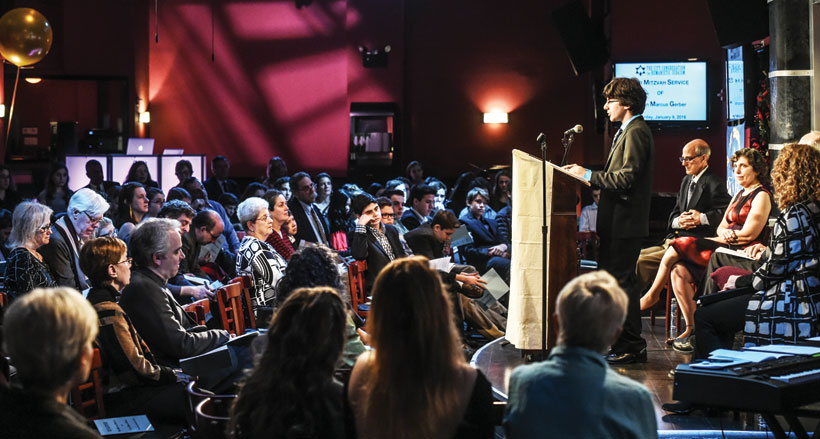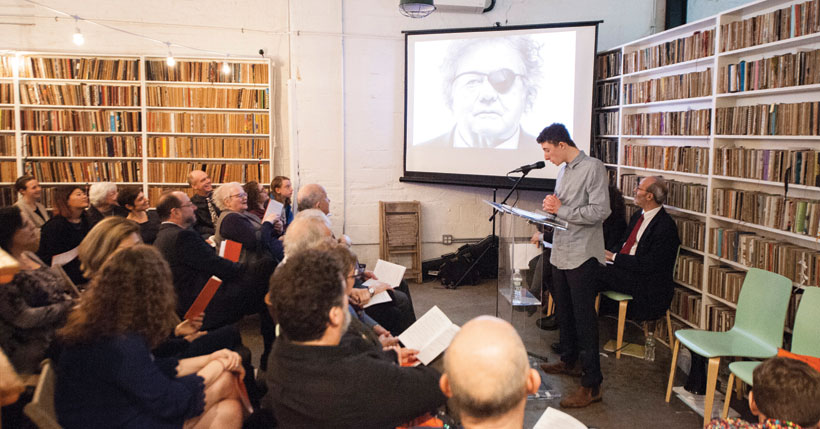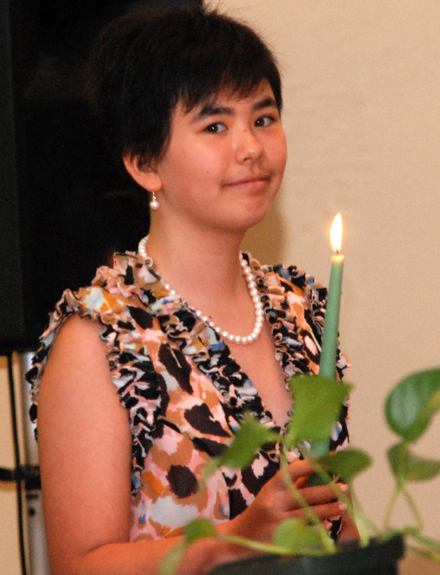
lives
THE NEWEST B’NAI MITZVAH TREND
IS OLDER THAN YOU THINK
by PAUL GOLIN
Imagine a Bar/Bat Mitzvah program that is learner-centered, develops skills that will remain useful beyond the ceremony, and aligns with the values and beliefs of most Jews today.
Must be a new initiative, right? Try fifty-five years and counting.
When Rabbi Sherwin T. Wine founded Secular Humanistic Judaism in 1963, many focused on what he discarded: a God-centered liturgy. Few beyond the movement considered what was gained when youth stopped memorizing a lengthy Hebrew liturgy and were no longer assigned Torah portions based on the randomness of a calendar date.
What’s gained is the opportunity for students to follow their own interests, to genuinely explore and discover rather than simply memorize, and to connect to Jewish subjects in a deeply personal way.
In recent years, the American Jewish community has seen several new attempts to reimagine the B’nai Mitzvah experience. That’s good news. One of the most surprising — yet least-discussed — findings from the seminal 2013 Pew Survey is that only half of American Jews have had a Bar or Bat mitzvah.

Cultural B Mitzvah at the City Congregation for Humanistic Judaism in New York City (above).
The Pew report did not break down the demographics further as to who forgoes B’nai Mitzvah; certainly, in older generations few girls were granted the opportunity. Still, it’s likely that the percentage of young people who benefit from this transformative coming-of-age ritual is declining. Today’s parents are less likely than older generations to say, “Well, I had to suffer through it and now it’s your turn.”
Continuing a ritual — any ritual — for continuity’s sake is no longer motivation enough. Today’s family must understand the meaning and benefit of doing it. Two major and related trends accelerate this shift: intermarriage and declining American religiosity. The B’nai Mitzvah experience in Secular Humanistic Judaism has always addressed those trends directly.
Celebrating Culturally and Multiculturally
Cultural B Mitzvah, an umbrella name for the Society for Humanistic Judaism’s programs (“B” is a gender-neutral abbreviation), allows for equal participation and celebration of all sides of the student’s family. While the Cultural B Mitzvah educational program is about Jewish history, culture, and achievements, and the ceremony is about young people affirming their Jewish identities, we, as Humanistic Jews, acknowledge and appreciate that everyone has multiple aspects to their identities. This is particularly true of those of us in multicultural and interfaith households. Our students are encouraged to consider and, if they want to, honor all aspects of their identities.
For example, one young man of Jewish and Irish-American descent presented on the Jews of Ireland. Although his Irish-American relatives are not Irish Jews, his interest and exploration of both sides of his heritage intersected. By educating himself — and by extension, everyone attending his Bar Mitzvah ceremony — about the Jews of Ireland, his Cultural B Mitzvah ceremony fostered warm feelings among both sides of his family far more powerfully than had he simply acknowledged their attendance in a thank-you speech. And his deep dive into his full family background, not just his Jewish side, gave him a greater understanding of where he fits, both in the Jewish story and in the human story.
When the approach to Judaism is cultural, not religious, we can offer a message of genuine inclusion to intermarried families, who now outnumber in-married households in the United States. Multiculturalism does not require a diminution of any participating culture to celebrate them all. Western theistic religions, by contrast, require exclusionary boundaries to define themselves.
Critical Thinking and Belief
The Pew Research Center has been tracking the decline in American religiosity for years, and Jews have been in the vanguard of that trend. Today, most Jews do not believe in the God of the Bible. This inevitably makes B’nai Mitzvah — as religious ritual — a harder sell. Offering a cultural B’nai Mitzvah can provide these households with a meaningful way of expressing their Jewish identity that also feels truthful to them.

The message of such a program is: you don’t have to say anything you don’t believe — not during a ritual or ceremony, and not in the rest of your life either. The poetry, songs, and humanistic blessings used are neither anti-religious nor anti-God — they focus on the human experience, evoking similar emotions of yearning, hope, inspiration, and wonder as theistic services. The liturgy is, then, uniquely inclusive to theists and non-theists alike. We know how powerful our approach is because people tell us: family members from other denominations who first encounter our movement through the B’nai Mitzvah of their relatives or grandkids regularly say, “I wish this was available when I was a kid/when I had kids.”
Ultimately, the difference comes down to the institutional goals of B’nai Mitzvah education. Rather than having to train good “synagogue citizens” who can participate in a minyan and chant trope — knowing that only a tiny percent of liberal Jewish students will ever find that skillset relevant while potentially turning off many more to Judaism forever — the Cultural B Mitzvah curriculum is intended to be just as strong a Jewish identity-builder while also developing critical-thinking skills that provide our young people with a leg up in their future endeavors. How do I determine what is true? What is my connection to the larger world? By age 10 or 11, kids are ready to grapple with the big questions and learn how to create meaning in their lives.
Creative Flexibility
Because the congregations in our movement have broad autonomy, a variety of Cultural B Mitzvah curricula and ceremonies have emerged. Many emulate the program from The Birmingham Temple, the first congregation for Humanistic Judaism, in suburban Detroit, where students work with a mentor to explore a Jewish historical role model or hero, examining their life, ideas, and deeds, and describing why the person was chosen and what they admire about the person. Other communities encourage the students to explore a Jewish topic of interest to them. The projects are diverse and the presentations are creative and include multimedia, art, and musical expressions.
A couple of Humanistic congregations use the Torah. With guidance, the students choose a portion that may or may not coincide with the portion of their birthday or Mitzvah celebration. The student reads the portion in Hebrew then provides a humanistic analysis in English. In other communities, a Hebrew poem is chosen and inserted into the presentation in lieu of reading from the Torah.
Most of our communities provide individual ceremonies; others hold group programs at the end of the Mitzvah year that incorporate an individual presentation by each student. Community-service projects, often related to a student’s research topic, are regular parts of the Cultural B Mitzvah process, and many programs include an exploration of the student’s own family history.
In a variety of formats over the past half-century, the Cultural B Mitzvah program has provided a meaningful coming-of-age ritual that solidifies a Jewish identity into adulthood, through engaging cultural education without religious indoctrination. ■
Paul Golin is the Executive Director of the Society for Humanistic Judaism (www.SHJ.org), the congregational arm of a movement that combines a Humanistic philosophy of life with Judaism as the cultural and historic experience of the Jewish people.
| PREVIOUS ARTICLE | NEXT ARTICLE |